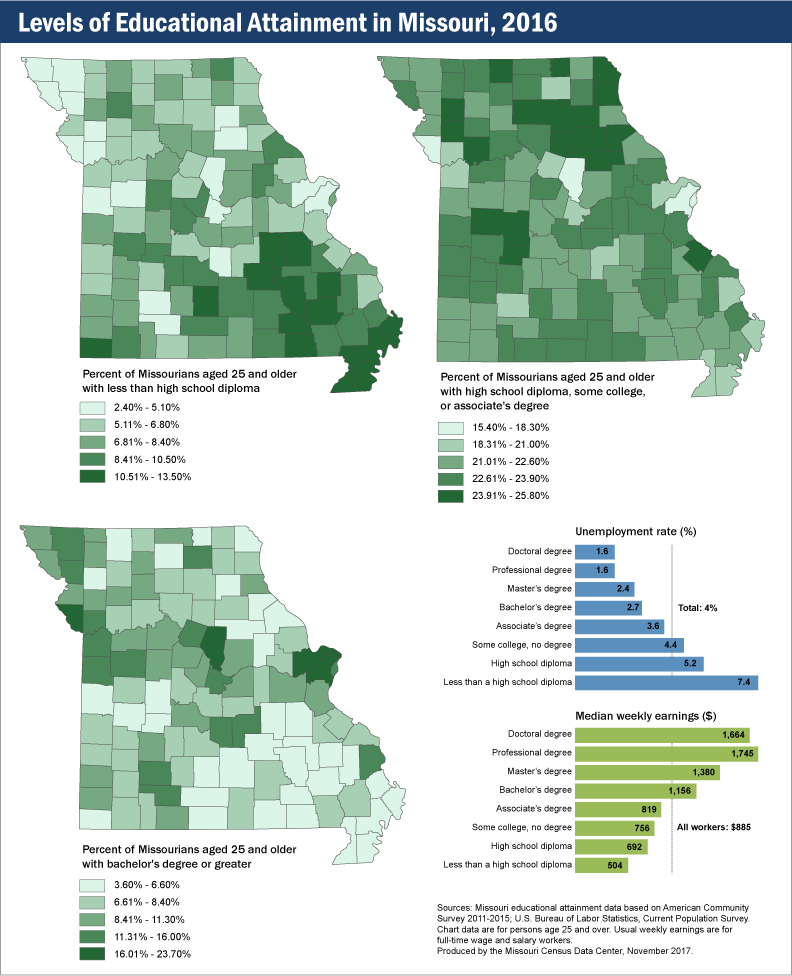
Missouri is a diverse and geographically complex state. Two major cities, multiple college towns, and sprawling rural landscapes create an interesting picture. This MCDC story map examines how net migration and unemployment rates fit into that picture on a county and regional level.
The data are from the MCDC’s State/County Annual Population Change web application, the U.S. Bureau of Labor Statistics, the U.S. Census Bureau, and the University of Missouri System (for MU employment data).
Missouri Census Data Center frequently works with MSDIS on mapping and data projects. MSDIS is a spatial data retrieval and archival system offering many mapping resources, primarily focused on the state of Missouri.



